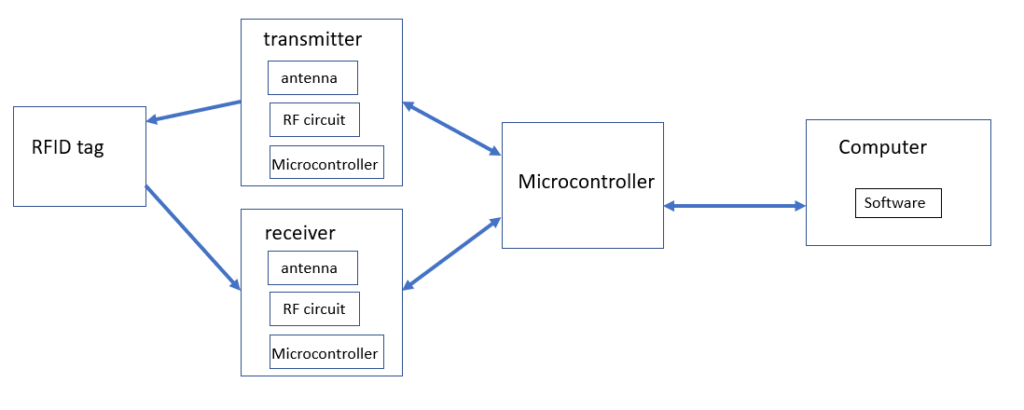Radio Frequency Identification (RFID) systems are part of a subcategory of cyber-physical systems, called Internet of Things. Cyber-physical systems link computational and physical elements, and Internet of Things is, more specifically, a network of physical objects. In Internet of Things, each object is identifiable through its embedded computing system. This is concept is the basis of RFID, but RFID uses radio signals to identify objects. Different frequencies of radio signals exist. Low frequency is 30-300 kHz, high frequency is 3-30 MHz, ultra-high frequency is 300 MHz – 1 GHz, and microwave frequency is 2.4-5.8 GHz.
Tags
The RFID tags are attached to objects and transmit identity information on demand. Tags are either passive or active. Passive tags do not contain a power supply and get the required energy from a signal from the transmitter. This causes passive tags to be better for a smaller operating distance. On the contrary, active tags have their own power supply which allows for greater operating distances. Tags can also be characterized based on memory access, which includes read-only, write once read many, and read-write tags. The information on read-only tags cannot be changed after being initially programmed by the manufacturer, but the initially programmed information can be read as many times as necessary. Write once read many tags are allowed to be programmed by the user once and then be read as many times as necessary. Read-write tags are different because read-write tags can be programmed many times.

